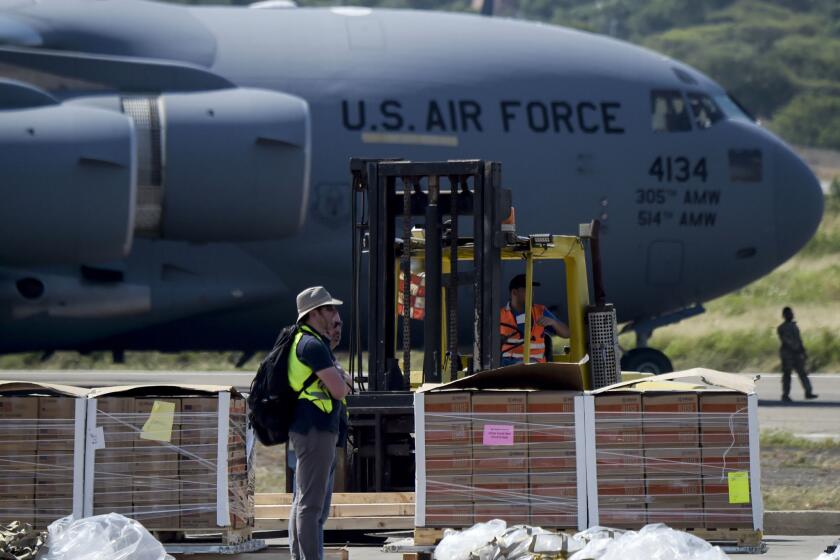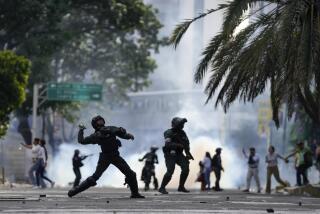Venezuelan immigrants are ostracized in Colombia amid xenophobia and shifting politics
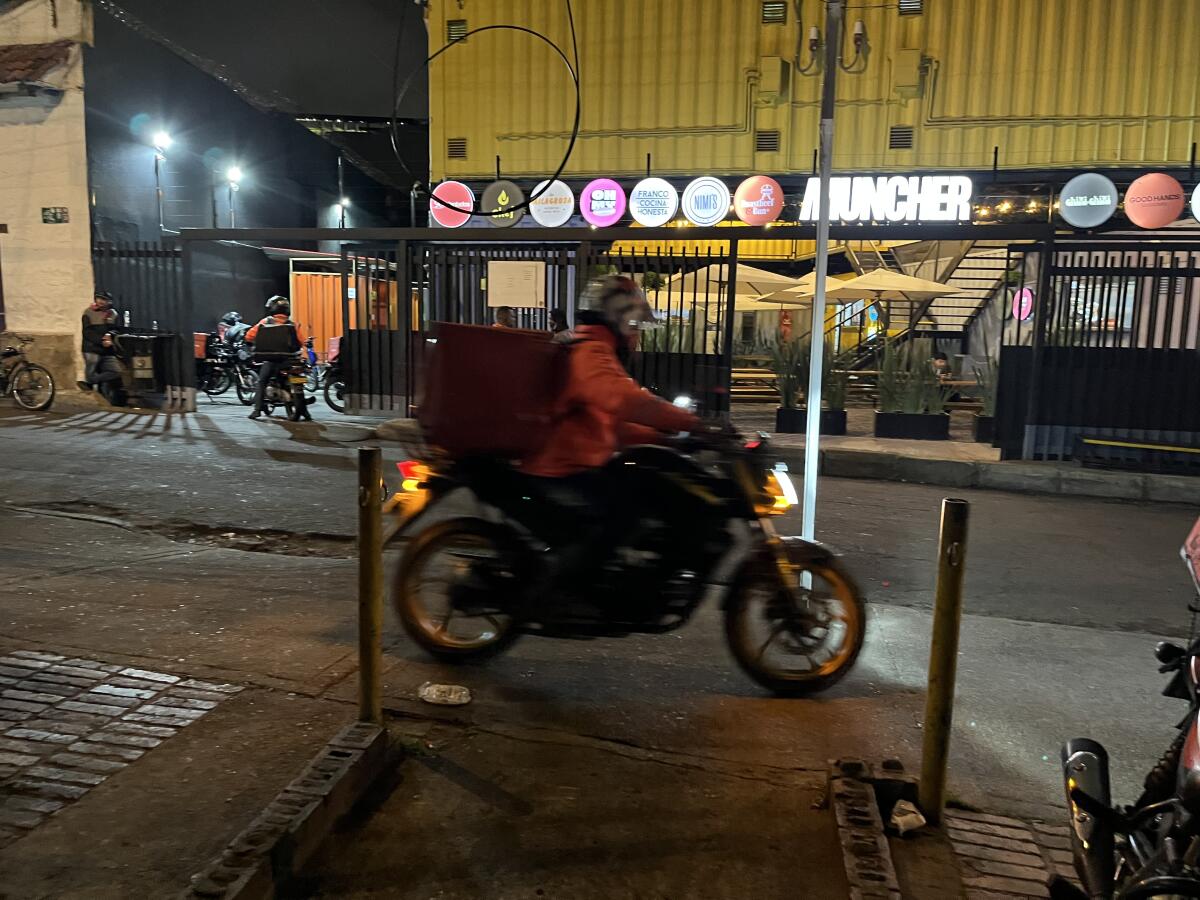
BOGOTÁ — Kerwin García never planned to flee his native Venezuela. Nowadays he sometimes wonders if he’ll ever fit into his adopted country, Colombia.
After growing up in the coastal state of Falcón, García left high school and joined the army, then briefly worked as a government employee. But as Venezuela’s economy sank deeper, and simple survival became difficult under the authoritarian rule of President Nicolás Maduro, he decided to join his older brother and an estimated 2.8 million other Venezuelans and immigrate to neighboring Colombia.
“I didn’t want to come from my country,” said the 24-year-old, wearing a black polo shirt, jeans and white sneakers while waiting at a community center where he’d come for advice, in the Los Mártires neighborhood of Colombia’s capital, Bogotá. “I don’t have a work permit, I don’t have a passport, I’m illegal.”
García initially found work at a business that made custom hats, then at a restaurant. But he was fired last July after he was blamed for some money that was missing, an experience that has left him angry and despondent.
“There they said that ‘Venezuelans are ñucos, they are donkeys,’” he recounted, using a colloquialism that means ignorant or uneducated. “They saw me differently, they didn’t treat me like a friend, but like a criminal.”
His adopted environment has scarred him emotionally. “Sometimes when I go to talk to a Colombian I feel embarrassed, I feel afraid of being rejected,” he said.
Colombia and Venezuela have a common history. The two nations share a 1,378-mile border, but in the past those divisions did not exist. Between 1819 and 1831, following the Latin American wars of independence from Spain, they formed part of the single stage of Gran Colombia. But border disputes occasionally erupted into military skirmishes or more lethal and longer-term altercations between the two countries. Colombia’s decades-long civil war between guerrilla armies and the federal government spilled over into Venezuela. In recent years, cross-border operations by multi-national drug cartels have further exacerbated tensions.
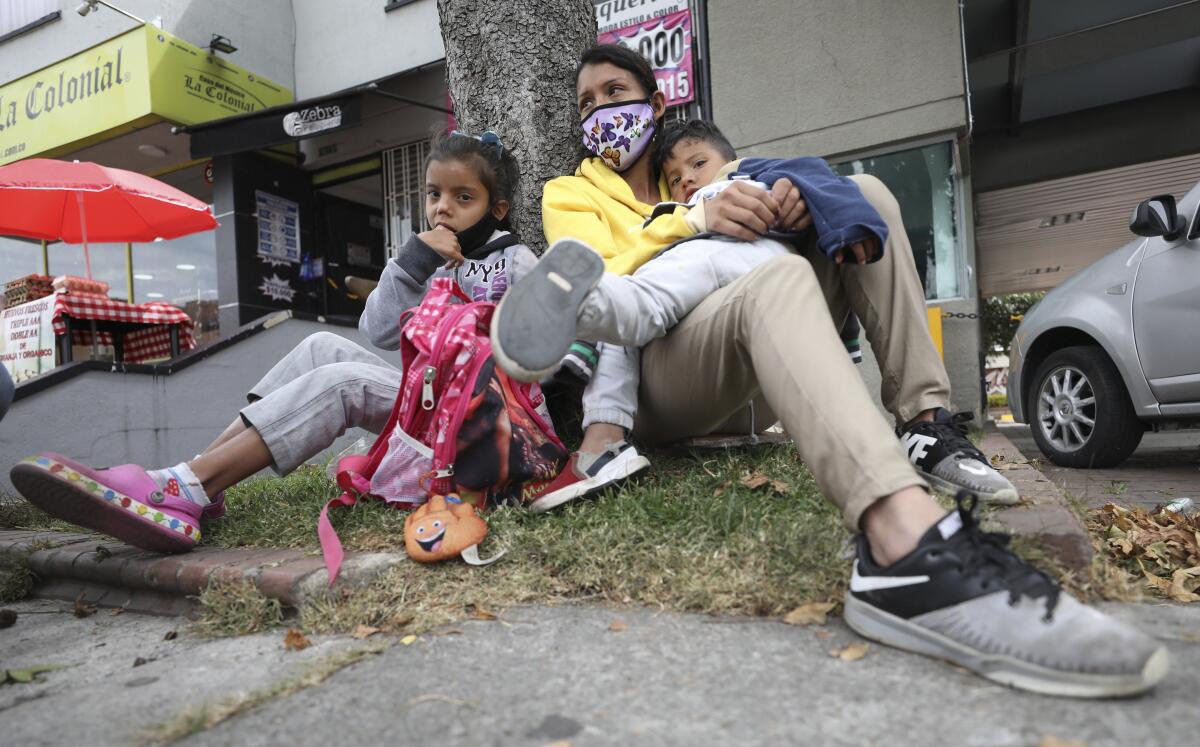
From the 1930s through the 1950s, the migratory wave went in the opposite direction. Colombians sought refuge in Venezuelan territory. The displacement increased in 1970 due to the internal conflict in Colombia, while in Venezuela there was prosperity thanks to oil production. In 2011, census data indicate, there were more than 700,000 Colombians in the neighboring nation, and until 2022, it is estimated that there were more than 4 million. Before a 2015 financial crisis, bilateral trade between Colombia and Venezuela was $2.247 billion; by 2021 it had plunged to $391 million, according to a report from the Universidad del Rosario.
Global immigration patterns have abetted a new dynamic. Through the end of 2022, according to the Office of the High Commissioner for Refugees, known as UNHCR, there were 108.4 million displaced people in the world due to persecution, violence, human rights violations and events that seriously altered public order. The agency maintains that 7.7 million of those are Venezuelans, the highest for any Latin American country.
Like many new arrivals in other corners of the world, Venezuela’s growing legions of desperate migrants often find they’re not welcome when crossing borders. That includes the tens of thousands of Venezuelans who in recent years have made their way through the perilous Darien Gap, overlapping Colombia and Panama, en route to Central America, Mexico and the United States.
U.S. border states like Texas and Arizona have been busing asylum-seeking Venezuelans to liberal “sanctuary cities” like New York, whose mayor, Eric Adams, has complained that the Biden administration hasn’t done enough to secure the border. The U.S. also has been pushing more migrants from Venezuela and other countries back into Mexico, and has resumed putting them on deportation flights.
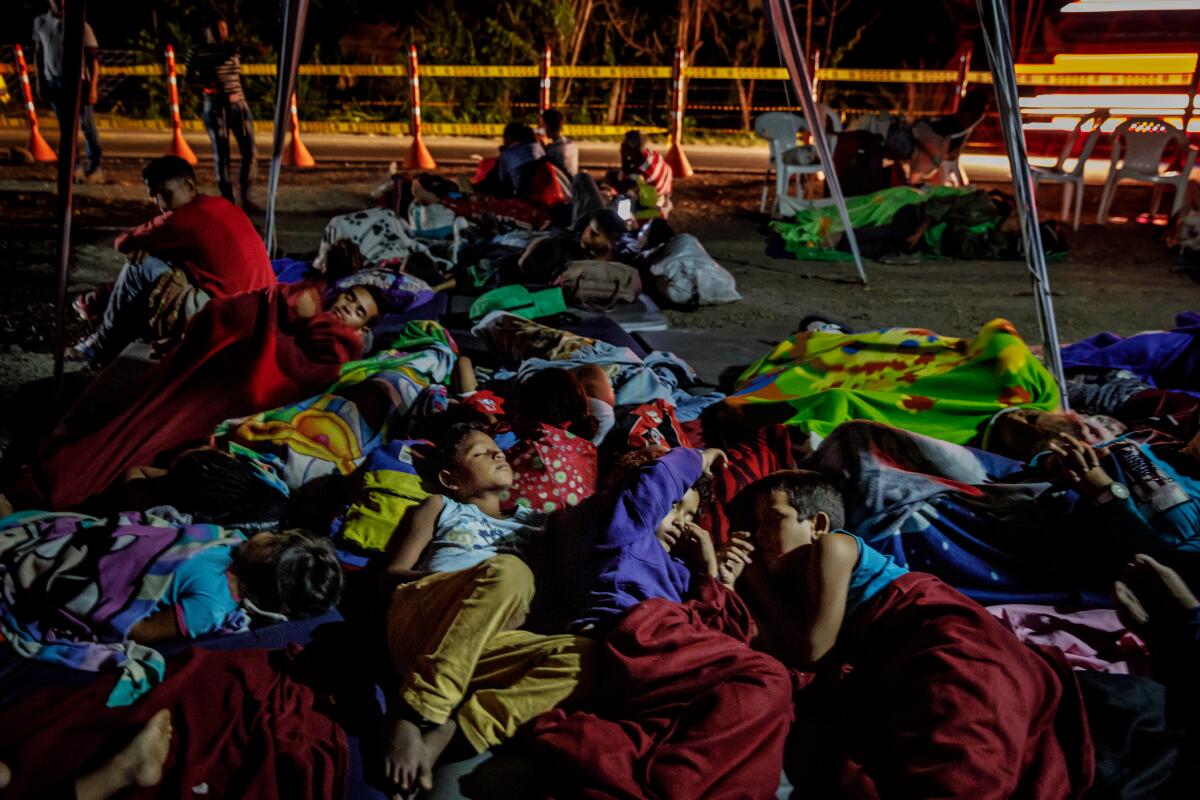
No country has absorbed more Venezuelan migrants than Colombia, which has a long, complex and often fractious relationship with its next-door frenemy. In 2015, at least 1,500 Colombians living in Venezuela were expelled, and another 22,000 left “voluntarily.”
Today, in practically any public space in Bogotá — and scattered throughout Colombia’s other major cities — it is normal to find Venezuelan immigrants asking for alms on buses, recycling bottles gathered off the streets, and otherwise hustling for a living. Some have managed to open restaurants, barbershops, beauty salons and other small businesses. In 2014, only 23,573 Venezuelan immigrants were living in Colombia.
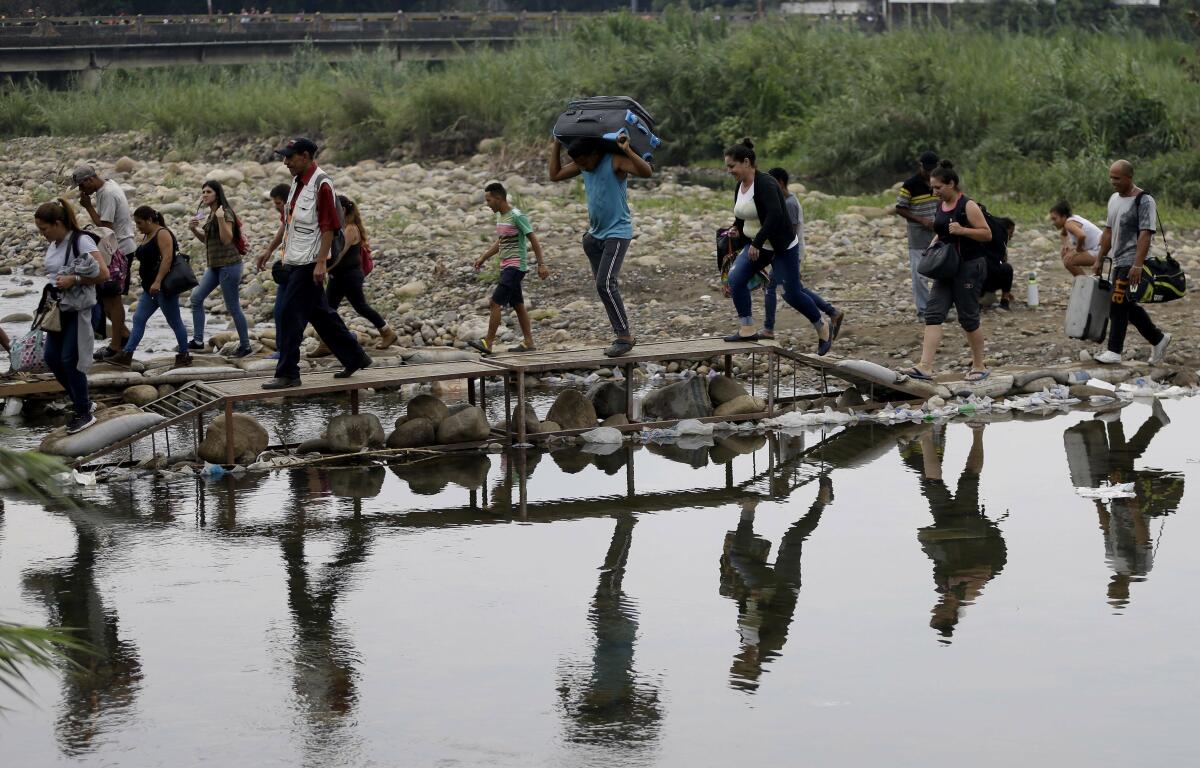
But according to a study by the Venezuela Observatory of the Universidad del Rosario, based in Bogotá, by October 2022 that total had swelled to 2.8 million immigrants; of those, 59.8% have a temporary protection permit that allows them to remain in Colombia under migratory rules and obtain work.
This explosion has provoked a cultural backlash and xenophobic outbursts against immigrants trying to integrate into Colombian society, said Ronald Rodríguez, a researcher and spokesperson for the Venezuela Observatory.
“Xenophobia is beginning to grow in Colombia and it is going at a very high speed,” said Rodríguez, adding that it has become common for Colombians to blame all manner of crimes and other social problems on Venezuelans.
On one rainy Friday night in the Chapinero neighborhood, in northeast Bogotá, a swarm of young men, with gelled hair and dressed to kill, gathered to relax at a craft brewery. A Bon Jovi tune drifted across the patio: It’s my life / It’s now or never/ But I ain’t gonna live forever....
But a few yards away, other boys in motorcycle helmets and red waterproof jackets, who work as food deliverers, looked anxious and agitated.
The first group of young men and boys were Colombians. The second were Venezuelan immigrants.
Among the latter group was Oscar Montes, 32, who arrived in Bogotá in 2021. In his native state of Trujillo, located in western Venezuela, he had worked making cheese. Back then, his monthly salary was the equivalent of $20, enough to pay for a carton of eggs, a kilo of meat and a kilo of cheese in Venezuela’s economy, beset by years of hyper-inflation.
“The currency is completely devalued, that’s why only the grandparents, the cuchos [old people] are there,” said Montes, whose 25-year-old brother and 23-year-old cousin moved with him in Soacha, a city that’s part of metropolitan Bogotá.
Although he now earns about $500 a month, without a work permit, soaring inflation has undercut Montes’ income, which also is due partly to the drop-off in home deliveries. As recently as last December, there were about 100 motorcycle delivery drivers, all Venezuelans, in Montes’ group. Now there are around 50.
Seeing the impact on their pockets, some of his former colleagues have drifted out of Colombia altogether. “Forty percent has gone to the United States,” said Montes, who has sold his own motorcycle to help save money for his own trip to the U.S.
“Life here is getting very hard,” he said.
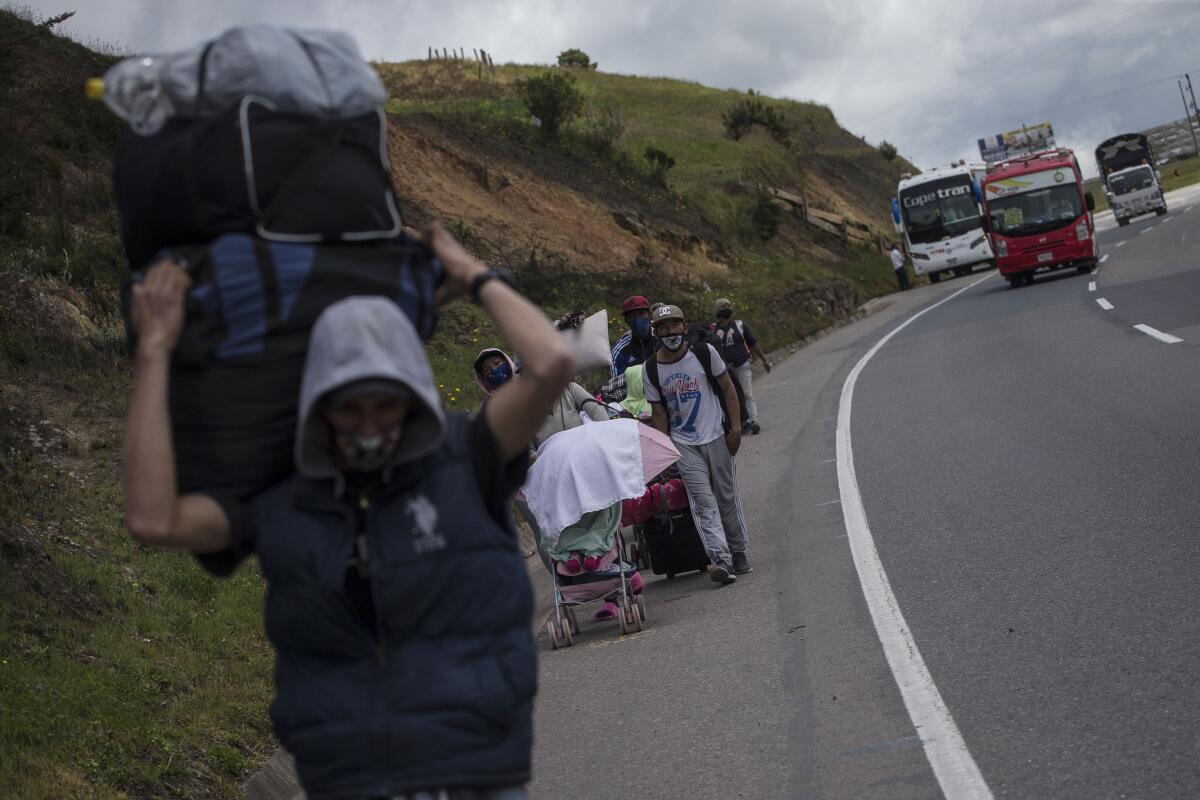
While life grows harder for Venezuela migrants, Colombian public opinion has grown less favorable.
Before the presidential election of May 2022, the pollster Invamer revealed that 63.2% of Colombians claimed to have a negative perception of Venezuelans, and 60.6% disagreed with the policies toward these immigrants of former president Iván Duque, whose four-year term ended in 2022. In 2021, Duque’s government granted a new 10-year Temporary Statute of Protection (TSPV) to an estimated 1.7 million Venezuelan immigrants.
In line with these opinions, the Xenophobia Barometer, an online platform that examines and transforms narratives about migration, xenophobia, racism and gender in Latin America, analyzed the discourse on migration by Colombia’s six presidential candidates in the 2022 election. Of a total of 11,987 media and other postings about immigration by the candidates, identified only 15 that referred to proposals to integrate Venezuelans into Colombian society. That low total reflected a political calculation “in the face of an issue that does not have popular support,” the organization declared.
This is the first time in its history that Colombia has received such a large migrant influx. The Universidad del Rosario estimates that 39.5% of migrants and refugees who have left Venezuela now live on Colombian soil; they began arriving in 2016, one year after Colombians and Colombian-Venezuelans were expelled from Venezuela by the Maduro regime.
The harshest years of this migratory wave were between 2018 and 2019, due to the humanitarian crisis in Venezuela, spurred by the Maduro regime’s violent crackdown on dissent.
“Migrants continue to leave Venezuela and they are not going to stop leaving because the reasons why they leave have not been solved. It continues to be a country with an economic and humanitarian crisis,” said Ana Karina García, a Venezuelan lawyer and director of the Fundación Juntos Se Puede, with offices in Bogotá and Cúcuta, in northeastern Colombia. The organization serves a daily average of 150 immigrants, refugees and returnees.
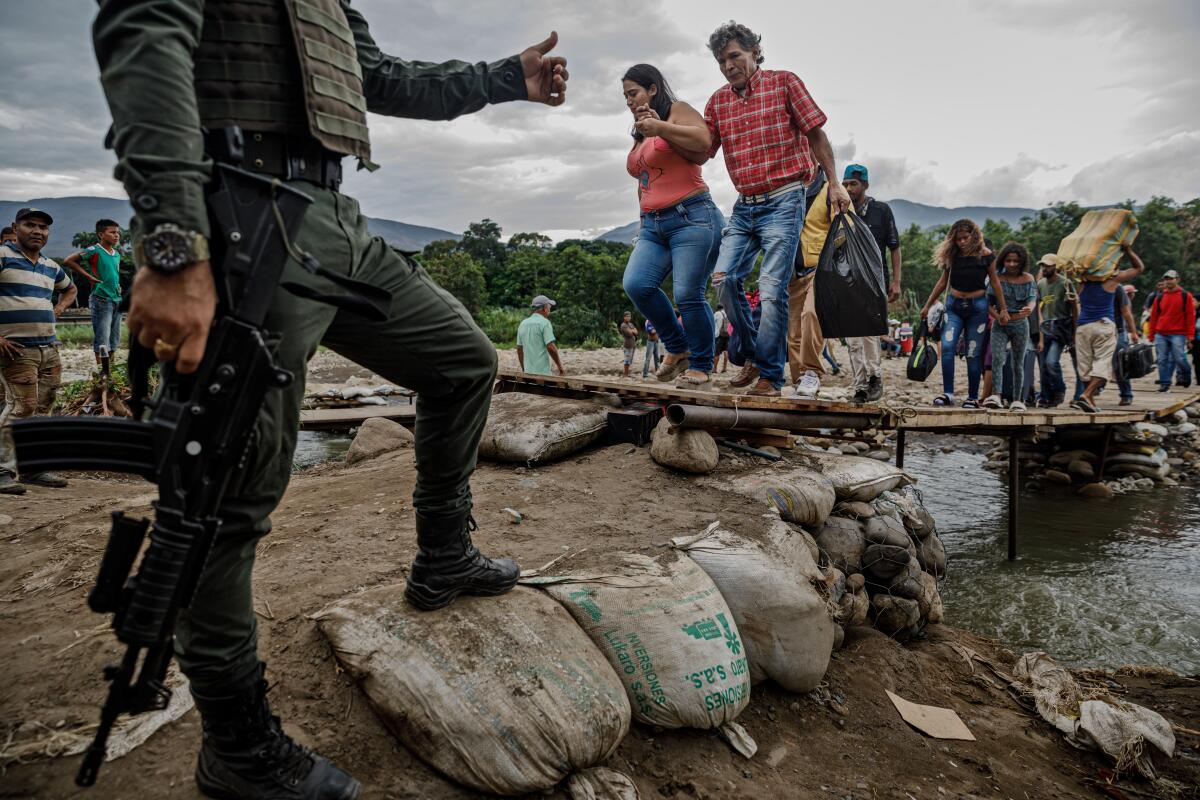
Although the foundation provides assistance to Venezuelan immigrants, it can’t reach those migrants who don’t meet the requirements and deadlines established under the application for Temporary Protection Statute for Venezuelan Migrants (ETPV), which was launched in March 2021. The ETPV offers immigration allows migrants to receive identification that authorizes them to remain in the territory and carry out any legal activity for 10 years. The last phase of the program was aimed at migrants who entered Colombia through an official immigration checkpoint between January 31, 2021 and May 28, 2023, and have a stamped passport as proof.
“Seventy percent of Venezuelans do not have a passport,” laments lawyer García. Likewise, people who have entered Colombia illegally since 2021 are not eligible for this program.
“A migrant who enters at this time – regular or irregular – cannot be a beneficiary of the ETPV,” she said.
So far, the government of President Gustavo Petro has not announced any expansion of this program. But what causes greater concern to human rights defenders is that over the last year the president has deemphasized the promotion of human rights, humanitarian care and integration of the migrant population.
For the beleaguered people of Venezuela, this Colombian border town has served for years as a kind of safety valve — a way station en route from their reeling homeland, or a place to score food, medicine and other basics no longer available in Venezuela.
As evidence, activists question why Petro, the nation’s first president from a leftist party, eliminated the position of border manager to oversee policy and humanitarian procedures, which was created in early 2018 in the government of right-wing President Juan Manuel Santos, in the midst of the migratory wave that was intensifying at that time. When another conservative president, Iván Duque, took power, he continued that appointment.
Some activists and critics believe that Petro is trying to ingratiate himself with the Maduro regime, given that in August 2022 the two governments reestablished diplomatic relations shortly after the Colombian president arrived at the Casa de Nariño.
“Here, the narrative about migration is being politicized as a clear strategy of denial, saying, ‘This is not happening,’” said José Ramón Villalobos, journalist and director of the digital newspaper El Venezolano Colombia, a medium created in exile in 2019. “Petro’s government has alliances with Maduro and the Venezuelan regime’s narrative on migration is political. But what is reflected in this migration is a profound human rights crisis,” said the Maracaibo native.
The Colombian government now talks about “de-Venezuelanizing” the immigration issue, as an official told the press — in other words, to classify and treat it as a broadly defined planetary phenomenon, rather than one specifically linked to Venezuela.
The Los Angles Times requested an interview with Carlos Fernando García, director of Migration Colombia, but did not receive a response.
With the endorsement of the Colombian government, the United States launched the Safe Mobility initiative in Bogotá last June (the initiative already is in effect in Guatemala and Costa Rica). What Joe Biden’s administration seeks is for Venezuelans, Haitians and Cubans who have regular status on Colombian soil to enter the United States under the family reunification process or the refugee program.
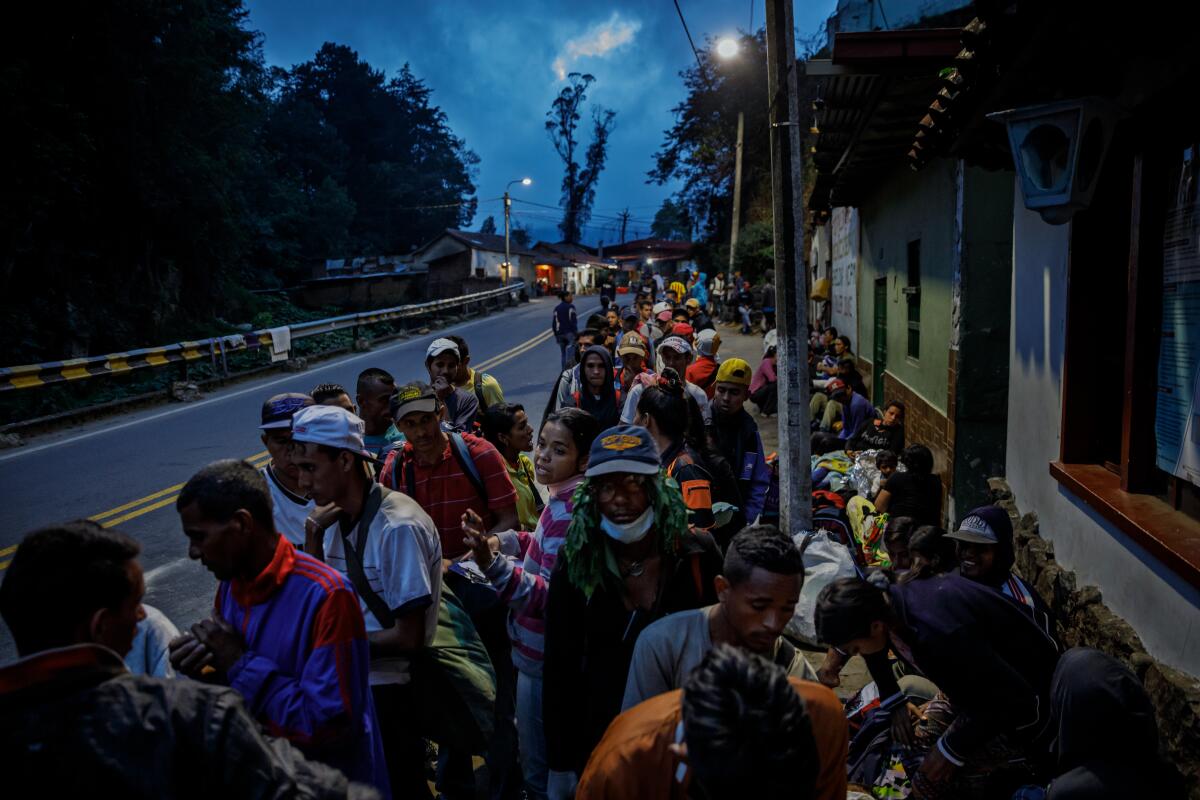
As of October 3, approximately 45,000 people had completed applications on the portal enabled for this program in the three countries, according to the U.S. State Department. Of that number, 4,000 have been referred to the Refugee Admissions Program for possible resettlement in the United States; 4,500 have been examined to determine if they might qualify as refugees or be eligible for family reunification under other programs. The specific figures for applications in Colombia were not detailed.
“The Safe Mobility initiative is one of the many ways the United States is facilitating access to safe and lawful pathways from partner countries in the region at no cost, so refugees and vulnerable migrants don’t have to undertake dangerous journeys in search of safety and better opportunities,” a U.S. State Department spokesperson said in a written message to The Times.
Human rights defenders consider this initiative to be a positive step, but argue that it only benefits a small group and is not aimed at the most vulnerable population that is transiting through the Darién Gap, many of whom do not have a family member to list in applying for the reunification process.
Researcher Rodríguez maintains that this measure consummates Petro’s shift in immigration policy, going from a strategy of solidarity with migrants to a containment scheme. The expert compares it to the strategy used by Mexican President Andrés Manuel López Obrador, or Chilean President Gabriel Boric.
“Colombia expanded the border of the United States,” the political scientist from the Universidad del Rosario said. “It is a containment strategy because it is to promptly serve Venezuelans; Colombians do not qualify. It is the containment of Venezuelans who are taking the Central American route.”
What is needed, activists say, is for the Petro government to expand the ETPV program to include people who entered since January 2021, including both migrants who entered legally and those who didn’t. At the same time,activists insist that nations throughout the hemisphere must tackle the growing migration phenomenon, including the role of civil society, private companies and international cooperation.
“Right now we are in a limbo,” said Gisela Serrano, founder of the Fundación Mahuampi Venezuela. Her undocumented compatriots are exposed to exploitative labor, human trafficking and sexual exploitation of women, among other abuses. “This creates a very high economic marginality, increases the range of poverty and vulnerability in the cities,” Serrano said.
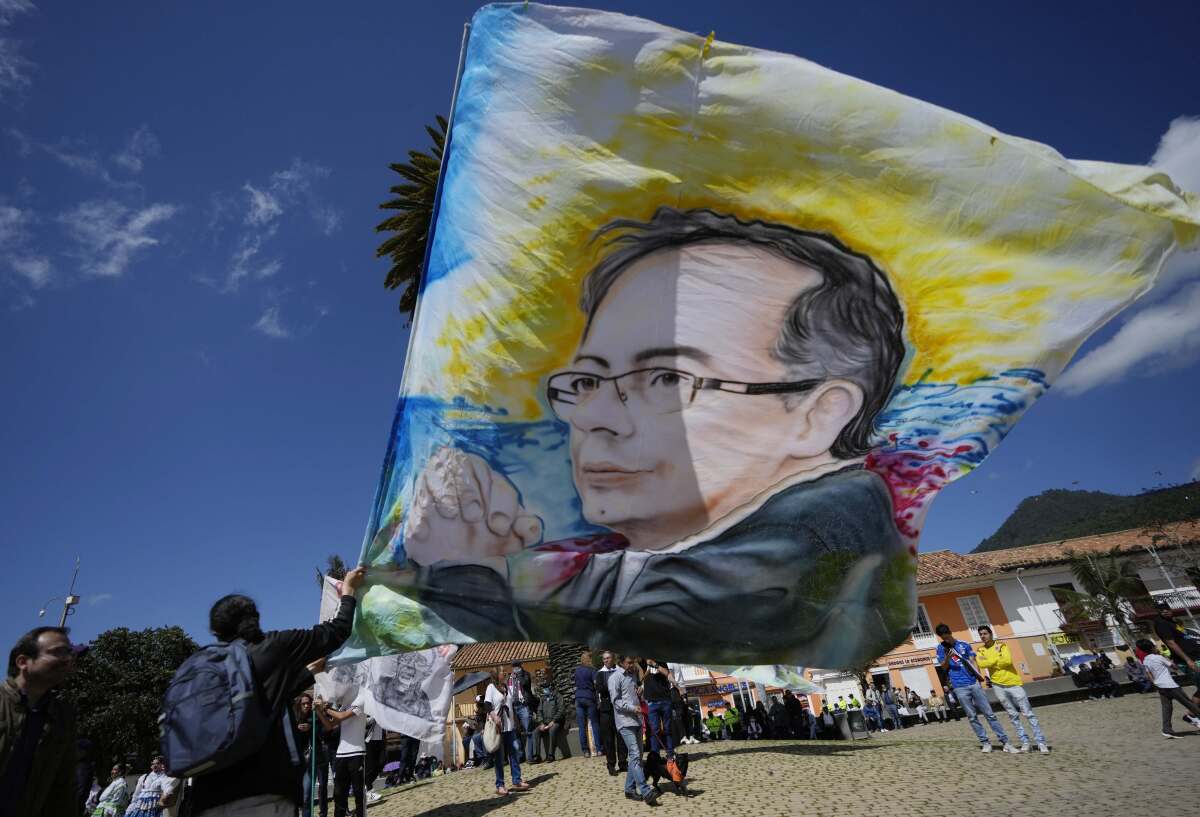
As Colombia’s government has altered its stance on immigration, other actors have stepped into the debate.
In the current campaign for Colombia’s regional elections for governors, mayors and deputies, scheduled for October 29, a number of candidates have used xenophobic rhetoric. Among them are former Minister of Defense, Diego Molano, who is running for Mayor of Bogotá; the Christian pastor Jaime Andrés Beltrán (Mayor of Bucaramanga); the Roman Catholic priest Edilson Huérfano (Cali Mayor’s Office); the former president of the association of bars and nightclubs (Asobares) in Norte de Santander, José Luis Mora (Mayor of Cúcuta); and the economist Mauricio Tobón (Government of Antioquia).
In a radio interview, Molano put forward the idea of building a mega-prison to hold undocumented migrants.
“Those Venezuelan criminals who today steal, rob and consider that Colombian law does not apply to them, we are going to take them to that prison and then we will deport them,” Molano was quoted as saying in press reports.
Such direct attacks on immigrants by politicians, officials or other public figures fuel animosity and legitimize xenophobic views, critics contend.
“People start with jokes and ridicule, but they don’t feel that it is an act of discrimination,” said Liliana Fernández, a sociologist and research coordinator of Xenophobia Barometer. “But a comment can be producing an entire system of discrimination against a population and can then be translated into acts against the rights of those people.”
Projecting fear and hostility toward foreigners is hardly novel across Latin America, a region constantly shaped and reshaped by immigration. The journalist Maryluz Vallejo collected and documented more than 120 cases in her book “Xenophobia al Rojo Vivo en Colombia” (Planeta, 2022), some dating back to the early 1920s. Her examples include the harassment and expulsions of Jews fleeing Nazism, Chileans who escaped the dictatorship of General Augusto Pinochet, and Spaniards driven into exile in Mexico and other countries by the Francisco Franco dictatorship.
“In Colombia, useful foreigners are considered to be those with university degrees or money. The rest are idle, harmful and many more stigmatizing qualifiers that are still used,” Vallejo said in an interview with a Colombian media outlet.
On a cold afternoon at a cafe in the La Candelaria neighborhood, near the Gabriel García Márquez Cultural Center, Carla Acosta, 41, spoke about her journey from her native state of Lara, in the central-western region of Venezuela, to the Colombian capital.
“I had to get off my cloud,” Acosta said, meaning that she had to rethink her idealized view of what life in Colombia would be like.
“I didn’t believe there was xenophobia here,” said Acosta, who arrived in 2019 with a 17-year-old son and an 11-year-old daughter.
When she settled in Bogotá, the city where her younger brother had lived since 2017, Acosta remembers that there were so many Venezuelans that Colombians began to treat the arrivals as a nuisance. On one occasion, during a job interview, her prospective employer saw that she was from Venezuela and threw the pages of her resume in her face.
“We do not accept Venezuelans,” he told her.
“It’s humiliating, it’s sad,” Acosta said, her eyes welling at the memory. “It is something that I am not even guilty of, I did not choose to be born in Venezuela, I feel that I do not deserve that label.”
A native of Barquisimeto — the hometown of Gustavo Dudamel, the L.A. Philharmonic’s esteemed music director and principal conductor — Acosta had run a vegetarian food business in her former city. But frequent shutoffs of drinking water and electricity, food shortages and inflation pushed her from her land.
In Colombia Acosta washed dishes, cleaned bathrooms and worked as a kitchen assistant. But she never let her business die. Through social media ―@peperina.food on Instagram― she has continued to offer dried fruits, granola and other products. Likewise, while she alternates part-time jobs, she spends part of her time working as a home chef, giving workshops and catering banquets wherever requested.
“It has been hard, but I have also known another face of Colombia,” Acosta said, explaining how she has been offered a helping hand.
Would you return to live in Venezuela? she was asked.
“At the moment, no,” Acosta said. “I went just now - in February - and everything is worse. In Venezuela there are no guarantees of life, and that scares me.”
